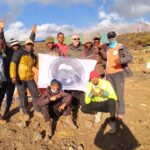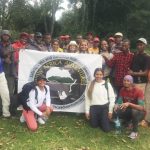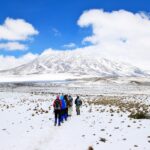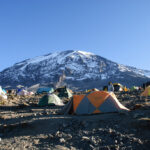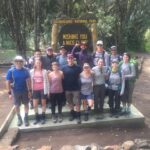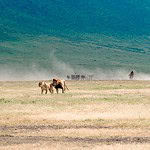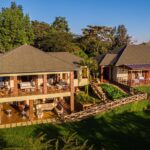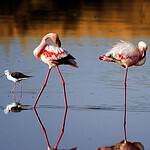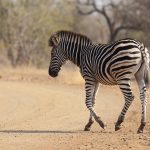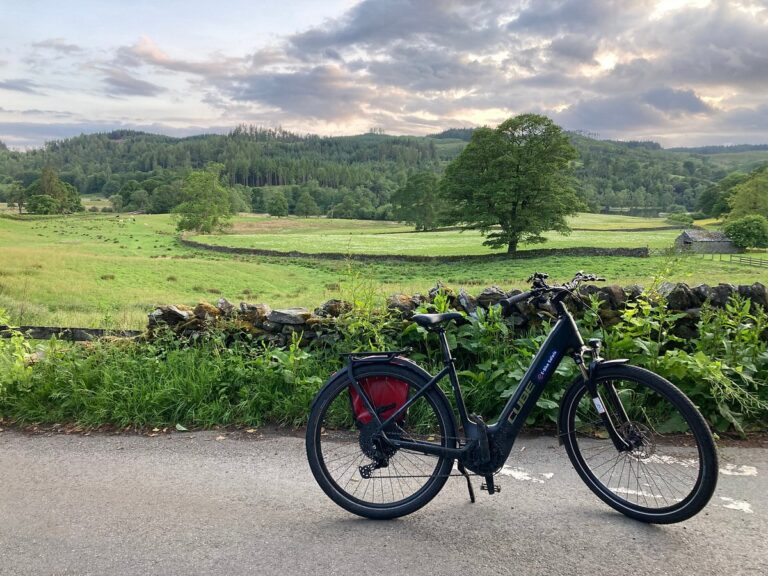Table of Contents
Rift Valley Volcano Hikes: Exploring Crater Landscapes Beyond Kilimanjaro
Journey into the geological heart of East Africa with Rift Valley volcano hikes, an extraordinary adventure beyond well-known peaks like Kilimanjaro. From emerald crater lakes to dramatic volcanic cones, the Rift Valley offers an abundance of undiscovered trails set against breathtaking landscapes. These hikes combine physical challenge, rich biodiversity, and awe-inspiring geology—ideal for adventurers who crave discovery beyond the tourist trail.
Whether you’re traversing rolling lava fields, ascending crater walls, or dipping in warm mineral springs, a Rift Valley volcano hikes expedition immerses you in wild wonder. Here’s your comprehensive guide to planning, executing, and relishing these unforgettable treks.
1. What Are Rift Valley Volcano Hikes?
Rift Valley volcano hikes explore volcanic features formed along the East African Rift system. These hikes vary from steep ascents up volcanic cones, to rim walks along deep crater lakes, to scenic paths winding through lava formations. These trails venture into African geology, traversing ancient eruptions, layered calderas, and unique ecosystems adapted to volcanic soil.
These hikes blend outdoor adventure with geological education—hiking through heat-altered rocks, safety-conscious basalt flows, and scenic crater-water bodies that define the Rift Valley’s volcanic character.
2. Why Choose a Rift Valley Volcano Hike?
Choosing Rift Valley volcano hikes allows hikers to experience:
- Rare volcanically formed landscapes—crater ridges, lava fields, geothermal zones
- Unique biodiversity—endemic flora that thrives in volcanic soil
- Geological wonder—rock structures, tufa columns, fumaroles
- Solitude—fewer crowds than major mountains
- Cultural ties—occasional Maasai or pastoralist visitation
These hikes offer deep immersion in geology, ecology, and adventure—dimensions unavailable on conventional treks.
3. Top Rift Valley Volcano Hike Destinations
3.1 Mount Longonot (Kenya)
A dramatic caldera walk around a 2,776 m volcanic cone—soaring crater walls and panoramic Rift floor views. This flagship Rift Valley volcano hikes location is ideal for day exploration or multi-day trekking.
3.2 Menengai Crater (Kenya)
One of the largest calderas in the world, ripe for rim and crater-floor trekking. Geothermal springs and isolated acacia woodlands make it a top Rift Valley volcano hikes site.
3.3 Ol Doinyo Lengai (Tanzania)
A unique experience to climb Africa’s only active natrocarbonatite volcano—Rift Valley volcano hikes at this peak mean night-time summit climbs, lava observation (when safe), and mineral-rich lakes.
3.4 Lake Natron Volcanoes
Surrounding cones like Gelai, Oldonyo Sambu, and Shombole offer challenging Rift Valley volcano hikes with dramatic soda lake views and flamingo breeding habitats.
3.5 Mount Suswa (Kenya)
Home to twin crater rim walks and lava tunnel exploration—this site combines volcanic trekking with cave adventures on Rift Valley volcano hikes.
3.6 Kerio Valley Volcanoes (Kenya)
Smaller cones like Barrier and Silali in remote valleys offer lightweight Rift Valley volcano hikes amid grazing lands—great for multi-day hiking.
3.7 Mbololo Crater (Tanzania)
Near Arusha, this walk among extinct caldera walls is perfect for half-day or full-day Rift Valley volcano hikes through exotic flora and valley views.
4. Typical Hike Itineraries
Mount Longonot (1–2 Days)
- Day 1: Summit rim walk (~6 km), crater rim hike (~6 km), wildlife spotting.
- Day 2 (optional): Overnight camp near crater floor.
Ol Doinyo Lengai (2–3 Days)
- Day 1: Trek to base camp at 2,300 m.
- Day 2: Summit at night for lava viewing & sunrise → descend to base camp.
- Day 3: Return to Arusha or nearby lodge.
Menengai Crater (1 Day)
- Rim loop (10 km) including interior descent for 360° Rift views.
Mountain Suswa adds cave exploration with rim walks—Rift Valley volcano hikes routes suit all fitness levels.
5. Season & Conditions
Best conditions for Rift Valley volcano hikes are:
- June–October: Dry season—ideal clarity for crater-edge views
- January–February: Short dry window with wildflowers
- Avoid heavy rains (Mar–May, Nov), which make trails slippery and crater floors muddy.
6. Gear & Preparation
Essentials for Rift Valley volcano hikes:
- Sturdy hiking boots and trekking poles
- Warm layers for summit ridges
- Sun protection—hat, sunglasses, sunscreen
- Plenty of water and electrolyte snacks
- Rain shell or windbreaker
- Headlamp (for Ol Doinyo Lengai night climb)
- Basic first aid kit
Local guides greatly enhance Rift Valley volcano hikes, both in safety and ecological interpretation.
7. Flora & Fauna Encounters
Though volcanic trails often seem barren, they host surprising ecosystems:
- Groundcover succulents, aloes, endemic shrubs
- Birdlife—kestrels, hawks, sunbirds, vultures
- Wildlife—baboons near Menengai, tree hyrax on Suswa, dik-dik
- Flamingos & other waterbirds at crater lakes
These “unexpected life” spots add richness to Rift Valley volcano hikes.
8. Safety & Sustainability
Rift Valley volcano hikes require:
- Trained local guide (especially on African volcanoes)
- Understanding trail stability—loose rocks, warm spots near vents
- Permits for protected areas
- Responsible waste carry-out
- Respect for cultural beliefs and local lands
These precautions ensure safe and respectful navigation.
9. Cultural Accessibility
Many Rift Valley volcano hikes intersect pastoralist Maasai lands—opening chances to:
- Learn livestock grazing cycles
- Attend worship or blessings at summit
- Purchase handmade sandals or beadwork
Guided interaction fosters cultural respect and experience.
10. Photography & Video Potential
Rift Valley volcano hikes offer sublime photography:
- Lava-lined rifts, stark crater silhouettes
- Panoramic views of alpine grasses and blue Rift floor
- Sunrise or moonlit crater-edge climbs at Ol Doinyo Lengai
- Wildlife-silhouetted against strombolian backgrounds
Bring wide-angle lenses and time-lapse gear.
11. Accommodation Options
Stay options complement Rift Valley volcano hikes:
- Basecamp-style camping with crater-level views
- Rustic mountain lodges
- Arusha or Nakuru hotels with guided package trips
- Mobile camp setups for multi-day volcano circuits
Plans depend on hike length and remoteness.
12. Booking & Guides
Choose Rift Valley volcano hikes with reputable operators:
- Small-group treks under 8 people
- Licensed guides with first-aid and volcanic knowledge
- Full logistics provision: transport, food, camping
- Clear fees and community support alignment
- Safety protocols: altitude, summit weather checks
These elements ensure a reliable trip.
13. Who Should Hike This?
Ideal hikers for Rift Valley volcano hikes include:
- Adventurous hikers craving geological exploration
- Naturalists fascinated by volcanic ecosystems
- Photographers seeking rugged beauty
- Culturally curious travelers
- Educators & students studying earth science
Great physical fitness is required.
14. Conservation & Local Impact
Rift Valley volcano hikes foster:
- Protection of fragile volcanic habitats
- Income for rural communities
- Education for visitors and locals
- Support for park & ranger programs
- Eco-tourism that values land and culture
Your trek benefits both nature and society.
Rift Valley volcano hikes offer a unique blend of adventure, scenery, geology, and culture. Whether standing atop a crater rim to watch dawn light up a soda lake or descending into volcanic tunnels, each hike expands your understanding of East Africa’s volcanic heart.
Ready to step off the tourist track? Lace your boots, draw a deep breath, and explore this wild, fiery chapter of the Rift Valley.

